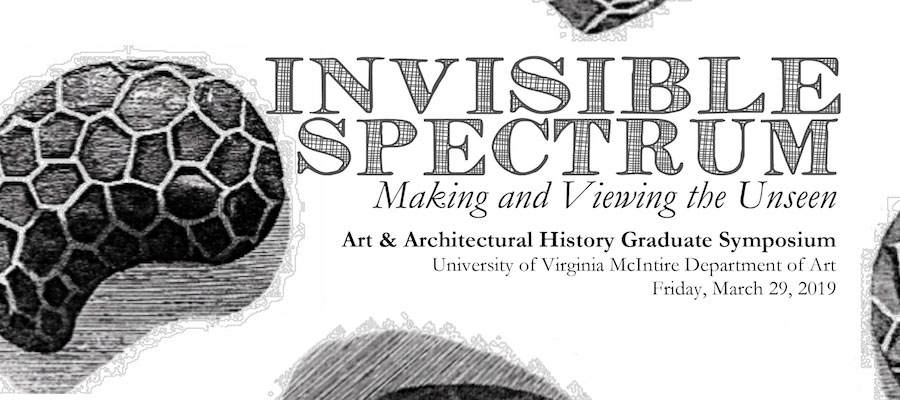Invisible Spectrum: Making and Viewing the Unseen, University of Virginia Art & Architectural History Graduate Symposium, UVA, March 29, 2019
Either because they are conceptually abstract or physically imperceptible, some things cannot be seen. The subjects of artistic expression, scientific inquiry, and religious devotion frequently exist outside the boundaries of the visible spectrum, posing a series of obstacles for their realization in material form, their reducibility to the conventions of image-making, or even their very conception. While new technologies, epistemologies, and artistic innovations have aided our endeavors to visualize the invisible, the mystery of the unseen endures.
The interdisciplinary symposium Invisible Spectrum asks how the invisible has been rendered in the history of visual culture. What is the relationship between the immaterial and material? How have artists expanded or transgressed the visible spectrum to picture the imperceptible, the unseen, the improbable, or the immaterial? What is the role of the viewer in conceiving such relationships? How have art, science, or other disciplines intersected or overlapped in attempts to realize the invisible? What are the stakes of such attempts? How do these attempts differ historically and culturally?
We welcome contributions from graduate students in the fields of art and architectural history, archaeology, visual and material culture studies, as well as from other disciplines.
Possible topics include, but are not limited to:
- Objects and images that push the boundaries of visual knowledge
- The nature of vision
- Intersections of visuality, scientific inquiry, and technology
- Visualizing semblances of power, identities, and/or race
- Envisioning the spiritual, divine, mythological
- Materializing sensorial experience
- Visualizing trauma and emotional/physical violence
- Embodiment, performance, and/or ritual
- Shaping space or liminality
- Distinctions between the real and the imaginary
